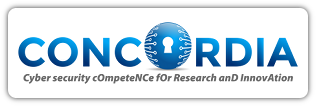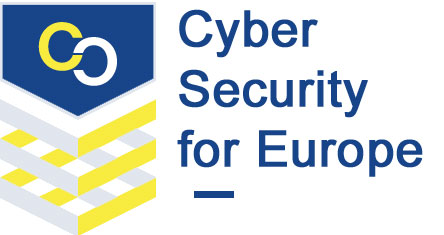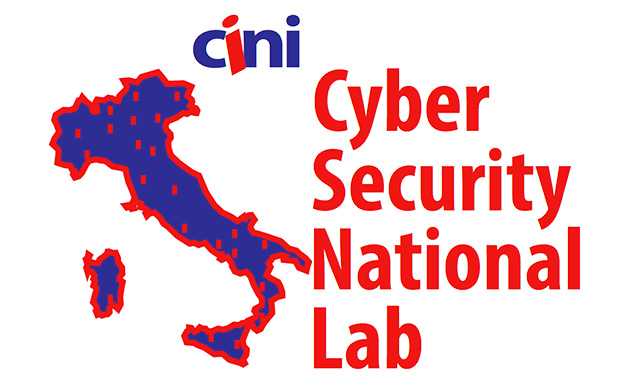Lectures Abstract
A Practical Introduction to the Blockchain and DLT World
Speakers: Burkhard Stiller, Bruno Rodrigues, Eder Scheid
Abstract: The Blockchain (BC) concept started to gain popularity due to high speculation over the value of its underlying cryptocurrencies. Bitcoin, the most famous BC implementation, was released in 2009, and, since then, more than 2.900 cryptocurrencies, BC implementations, and tokens have arisen. However, even with the popularization of the BC concept and the media attention, most of the theory behind its technical aspects and interaction mechanisms are still not fully understood by many of its users. Thus, the course day on "Blockchains" will introduce the attendees to an up-to-date perspective on selected BC details, describing not only major technically fundamental concepts but also how the latest research trends possibly advances or may influence the technical market. BCs and Distributed Ledger Technologies (DLT) focus on a distributed system's perspective of persisting electronicly represented facts immutably. Additionally, that course day provides a guided practical part on the topic, in which attendees can interact hands-on with these technical approaches while observing selected fundamental concepts in practice. Specifically, this course provides, at first, a basic theoretical and technical introduction, as well as overview on BCs and Smart Contracts (SC) and, secondly, details deployment and operational challenges as well as their opportunities based on real use cases, exploited driven by respective applications developed at the Communication Systems Group CSG of the University of Zurich UZH.
Hence, the audience will have not only the first contact with main blockchain concepts, algorithms, and protocols but also with its key characteristics that may influence the decision of adoption and operation of a blockchain. In conclusion, the significant opportunities and challenges for blockchain-based applications will be discussed, complemented with a critical review. All these aspects supported by a hands-on experience based on a cluster of 20 Raspberry Pi devices so the attendees can practically interact in a permissioned blockchain with nodes accessible from a browser. Thus, the use of the attendee's owns machines is highly recommended.
Further information on the CSG team at UZH - including the three tutrial presenters - can be found at the URL. The overview on research at CSG in general is available at the link and refined details on the various Blockchain projects and work is available at the link.
A quantitative study of vulnerabilities in the Medical Internet of Things.
Speaker: Hervé Debar
Abstract: Medical objects, small or large, increasingly rely on digital technologies to monitor patients or deliver care. They form a part of our digital critical infrastructure, that can be significantly impacted by cyber attacks. For example, the Wannacry ransomware shut down hospitals in Europe for hours, even days. This presentation will analyze recent vulnerabilities that have affected medical objects, and present findings related to the characteristics of these vulnerabilities. It will then use these findings to propose ideas for improved cybersecurity in the medical IoT.
Automated Security Analysis of the IoT Software Updates
Speaker: Alessandro Armando
Abstract: IoT devices often operate unsupervised in ever-changing environments for several years. Software updates must therefore be carried out on a regular basis. Current approaches to software updates on IoT, like the recent SUIT proposal put forward by the IETF, ensure the integrity and confidentiality but they do not analyze the content of the software update. Vulnerable applications, possibly developed by third-party providers, can thus be automatically deployed on devices and this may lead to havoc. I will present an automated software analysis framework that allows for the automatic verification of applications contained in software updates against a security policy. The viability of the approach has been tested against a set of RIOT OS applications. This has led to the discovery of 26 security policy violations in 31 RIOT applications.
Distributed Workflow-driven access control for IoT
Speaker: Jorge Cuellar
Abstract: IoT devices are physically embedded and are accessed by the users or machines in the same order as the physical objects are accessed, which is often a pre-defined order. Access control should involve monitoring the /sequence of access/ to deny access to malicious access patterns. The relation between workflows and security has been a recurrent topic in the standard literature of the last 20 years. It has become clear that workflows are a very natural and general way of expressing security policies in complex environments. The difficulty is to use those models in distributed systems without relying on a centralized database or synchronizing automata. The goal is to provide a fully distributed declarative workflow enforcement and workflow-aware access control for IoT, and similar scenarios, like smart manufacturing or supply chain security. Clients and servers exchange tokens that encode assertions about the entities, information about which step of the workflow the client is executing, and the access control conditions required for the current step of the workflow. To guarantee that the constrained servers understand the declarative policies, a local reasoner on them is required, to verify that the presented tokens are valid, according to valid policies, and that they have been created by proper trusted authority. Special care is taken that the reasoner runs within constrained servers, that do not have much processing power or storage capacity. To assure that the constrained servers do not require large storage, a notion of "snippets" is introduced which can be seen both as small excerpts of Petri Nets (workflows) and as access control policies that can be sent by the client when required by the server. The local reasoner includes a "trust policy verifier" in order to recognize both the policies and the tokens as authorized. Finally, even in the case that the servers have confidentiality requirements, and accountability procedure in place to determine the root cause of detected problems and entity responsible for the error. The trusted Judge is able to revise a log and ask questions to suspects. The protocol terminates in the normal case blaming one of the participants, who has misbehaved and never blames a compliant party.
Internet Security Research using Public Measurement Data and Apache Spark
Speaker: Matthijs Jonker
Abstract: The Internet has become society's primary communications fabric. The security, reliability, and stability of core Internet components are therefore of critical importance. The Domain Name System (DNS) is a core component and errors in its configuration can create opportunities for attackers to exploit (e.g., name server hijacking or bypassing cloud-based protection services). In this hands-on, students will be given basics about popular data formats and open tools within the Big Data ecosystem. Using (semi) publicly available Internet measurement data, students will then learn how to use readily available data and tools to study and reveal security concerns.
People, Privacy and Security
Speaker: Jane Henriksen-Bulmer
Abstract: The lecture will cover what privacy means and how GDPR has changed the landscape by, among other things, making privacy risk assessment obligatory. If time permits, students will have an opportunity to conduct a simulated Privacy Risk Assessment using a prototype consultation tool for privacy risk assessment that we are in the process of developing.
Usable Privacy – Eliciting Stakeholder Requirements
Speaker: Simone Fischer-Hübner
Abstract: Designing for Usable Privacy requires the mapping of legal privacy requirements into HCI (Human Computer Interaction) requirements. Moreover, for following a Human-centred design approach, HCI requirements have to be elicited and refined with end users in the early design and system evaluation phases. The Design of usable PETs (Privacy enhancing Technologies) poses several challenges, as PETs are often based on “crypto magic” operations that are often counterintuitive to end users. Moreover, as privacy is typically not the user’s primary task, suitable privacy defaults and selections of configuration settings need to be found meeting different end user preferences and suitably addressing tradeoffs of privacy with other goals that may exist.
This talk will discuss such usable privacy design challenges and provides examples for HCI requirements that were elicited for PETs developed in the EU H2020 projects PAPAYA and PRISMACLOUD, which address those challenges.
Related publications:
Using cyber ranges for developing and assessing cyber situation awareness
Speaker: Will Mees
Abstract: Cyber ranges, virtual environments supporting training, testing and complex infrastructure emulations, are increasingly used in many cyber training curricula. In this lecture and in the associated hands-on exercise we will show how aligning learning objectives, instructional strategies, and assessments allows us to successfully use cyber ranges for improving cyber situation awareness.








